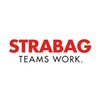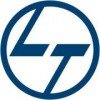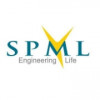Filter interviews by
Clear (1)
Ace Pipeline Contracts HSE Engineer Interview Questions and Answers
Ace Pipeline Contracts HSE Engineer Interview Experiences
1 interview found

(1 Question)
- Q1. What is Hira,isa
Interview Preparation Tips
Top trending discussions






Interview questions from similar companies

HSE Officer Interview Questions & Answers
China State Construction Engineering Corporationposted on 12 Oct 2024
I applied via Approached by Company and was interviewed in Sep 2024. There was 1 interview round.
(2 Questions)
- Q1. Whats LEL tell procedures
- Q2. Tel us the control of confind

I applied via Approached by Company and was interviewed in Sep 2023. There were 2 interview rounds.

(2 Questions)
- Q1. What experience do you have
- Q2. Whay qualifications

Senior Electrical Engineer Interview Questions & Answers
McNally Bharat Engineeringposted on 5 Feb 2025
I was interviewed before Feb 2024.
(1 Question)
- Q1. As per work experiences
(1 Question)
- Q1. As per work profile
(1 Question)
- Q1. HR Related formal interaction

I applied via Approached by Company and was interviewed in Mar 2023. There were 2 interview rounds.

(5 Questions)
- Q1. What is Restricted AREA?
- Ans.
Restricted area is a designated area where access is limited to authorized personnel only.
Restricted areas are typically marked with signs or barriers to indicate the restricted access.
Access to restricted areas is usually controlled through key cards, passwords, or security personnel.
Examples of restricted areas include server rooms, laboratories, and construction sites.
Unauthorized entry into a restricted area can re...
- Q2. Documents required for lifting activity
- Ans.
Documents required for lifting activity include risk assessment, lifting plan, equipment inspection records, and operator training records.
Risk assessment document to identify potential hazards and control measures
Lifting plan outlining the steps, equipment, and personnel involved in the lift
Equipment inspection records to ensure that lifting equipment is in good working condition
Operator training records to verify tha...
- Q3. Safety precautions for excavation safety
- Ans.
Excavation safety precautions are essential to prevent accidents and injuries on construction sites.
Ensure proper shoring and sloping of excavation walls to prevent collapses
Implement a permit system to control access to excavation sites
Provide adequate training for workers on excavation safety procedures
Regularly inspect excavation sites for hazards and address them promptly
Use protective equipment such as hard hats a
- Q4. Safest distance for mechanical excavation near the live lines or underground pipelines
- Ans.
The safest distance for mechanical excavation near live lines or underground pipelines is at least 18 inches away.
Maintain a minimum distance of 18 inches from live lines or underground pipelines during mechanical excavation to prevent damage or accidents.
Always contact the utility company to locate and mark the exact location of underground pipelines before excavation.
Use non-destructive digging methods such as vacuum...
- Q5. What are the steps in JSA
- Ans.
JSA stands for Job Safety Analysis, a process used to identify and control hazards in the workplace.
Identify the job or task to be analyzed
Break down the job into individual steps
Identify potential hazards for each step
Determine preventive measures to control the hazards
Communicate findings to workers and supervisors
Interview Preparation Tips

I applied via Recruitment Consulltant and was interviewed before Jul 2022. There were 3 interview rounds.

(1 Question)
- Q1. Personal and professional
(4 Questions)
- Q1. Mostly from your past experience
- Q2. Your plan after joining the group
- Q3. How to solve the problem without support from superior
- Ans.
Seek alternative solutions, gather relevant information, consult with colleagues, and take decisive action.
Identify the problem and its root cause
Research possible solutions independently
Consult with colleagues or peers for advice
Take decisive action based on available information
Document the process and outcome for future reference
- Q4. Technical questions by project manager or head of the department
Interview Preparation Tips
Ace Pipeline Contracts Interview FAQs
Recently Viewed
Tell us how to improve this page.
Ace Pipeline Contracts Interviews By Designations
Interview Questions for Popular Designations
Ace Pipeline Contracts HSE Engineer Interview Process
based on 1 interview
Interview experience
Interview Questions from Similar Companies
Ace Pipeline Contracts HSE Engineer Reviews and Ratings
based on 2 reviews
Rating in categories
|
QA QC Engineer
20
salaries
| ₹3 L/yr - ₹6.2 L/yr |
|
Planning & Billing Engineer
9
salaries
| ₹4.8 L/yr - ₹7.2 L/yr |
|
Civil Engineer
9
salaries
| ₹2.5 L/yr - ₹5 L/yr |
|
Mechanical Engineer
9
salaries
| ₹3 L/yr - ₹4.5 L/yr |
|
HR Executive
8
salaries
| ₹2.7 L/yr - ₹4.2 L/yr |

Larsen & Toubro Limited

Punj Lloyd

Kalpataru Projects International

TechnipFMC
- Home >
- Interviews >
- Ace Pipeline Contracts Interview Questions >
- Ace Pipeline Contracts HSE Engineer Interview Questions










